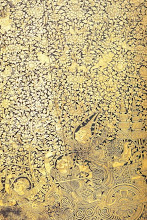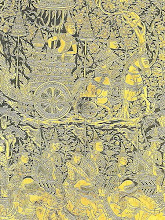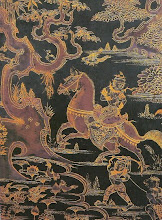
The royal elephant
The elephant,which once roamed wild in large numbers in forests, has played an important cultural and economic role since the early days of the Kingdom.'White elephants' were revered as symbols of royalty; The Siamese national flag used to show a white elephant on a red back ground, until the adoption of the present striped flag in 1917. The kings and princes of Ayutthaya rode into battle on war elephants, and King RamaIV of Bangkok in a letter offered a supply of the animals to US president Bunchanan. In the past and to some degree at present, elephants, valued for their skill and their might, provided the main work force in the teak forests of the north.
 The royal prosession in Siam
The royal prosession in Siam









 The civilization
The civilization









